Figures & data
Table I. Demographic and clinical characteristics of patients in the midtrimester and those at term with and without spontaneous labor.
Table II. Demographic and clinical characteristics of patients presenting with spontaneous preterm labor with intact membranes.
Table III. Demographic and clinical characteristics of patients presenting with preterm prelabor rupture of membranes.
Figure 1. Amniotic fluid concentrations of sTREM-1 in normal pregnancies at mid-trimester and in those at term with and without labor. The median amniotic fluid sTREM-1concentration was significantly higher in pregnancies at term not in labor than in those in the mid-trimester (4277.6 pg/ml, IQR 2046.5-5900.6 vs. 1140.4 pg/ml, IQR 631.7–1401.8; p < 0.001). No significant differences were found in the median amniotic fluid concentration of sTREM-1 between women with spontaneous labor at term and those at term not in labor (4712.4 pg/ml, IQR 3368.4–6008.8 vs. 4277.6 pg/ml, IQR 2046.5–5900.6; p = 0.4).
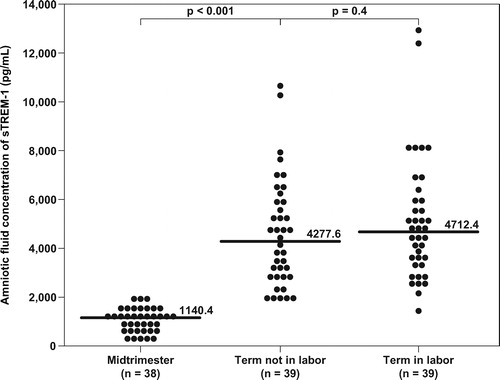
Figure 2. Amniotic fluid concentrations of sTREM-1 among women with spontaneous preterm labor (PTL) and intact membranes. The median amniotic fluid concentration of sTREM-1 was significantly higher in patients with intra-amniotic infection/inflammation (IAI) than in women without IAI (6154.4 pg/ml, IQR 3973.9–8987.4 vs. 3282.8 pg/ml, IQR 2265–4535.6; p < 0.001) as well as in those who delivered at term (6154.4 pg/ml, IQR 3973.9–8987.4 vs. 2794 pg/ml, IQR 1845.4–4321; p < 0.001). There was no significant difference in the median amniotic fluid concentration of sTREM-1 between those who delivered preterm and those who delivered at term.
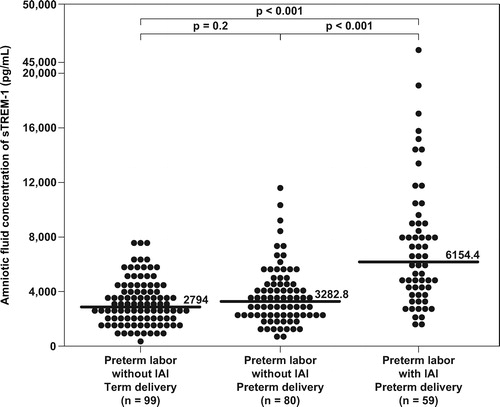
Figure 3. Amniotic fluid concentrations of sTREM-1 in women with preterm prelabor rupture of the membranes (PROM). The median amniotic fluid sTREM-1 concentration was significantly higher in patients with intra-amniotic infection/inflammation (IAI) than in those without IAI (7893.1 pg/ml, IQR 4085.5–13670.1 vs. 3386.6 pg/ml, IQR 2330.5–4027.5; p < 0.001).
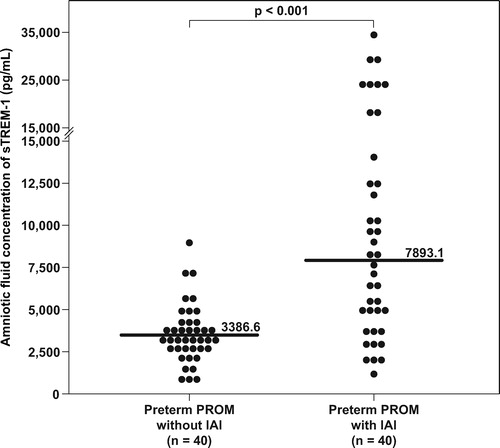
Figure 4. Amniotic fluid concentrations of sTREM-1 in patients with spontaneous preterm labor with and without histologic chorioamnionitis who delivered within 72 h from amniocentesis. Patients with histologic chorioamnionitis and/or funisitis had a significantly higher median sTREM-1 concentration in amniotic fluid than those without histologic inflammation (7936.9 pg/ml, IQR 4134.8–11740.5 vs. 4180.5 pg/ml, IQR 3125.7–4935.4, respectively; p = 0.003).
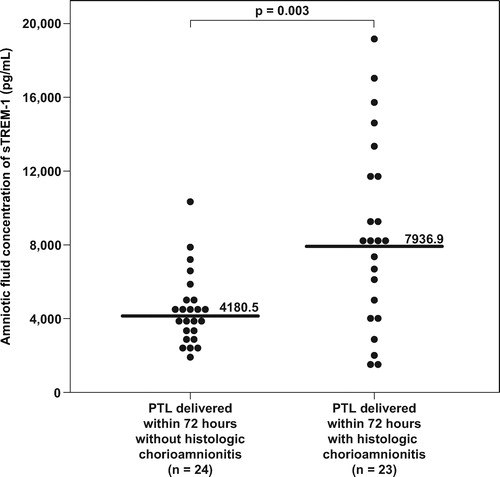
Figure 5. Receiver operating characteristic (ROC) curves of amniotic fluid sTREM-1 concentration in patients with spontaneous preterm labor and intact membranes. (a) ROC curve for the identification of positive amniotic fluid culture for microorganisms (area under the curve (AUC) for amniotic fluid sTREM-1: 82.3%; p < 0.001). (b) ROC curve for the identification of intra-amniotic inflammation, defined as amniotic fluid IL-6 concentration ≥2.6 ng/ml (AUC for amniotic fluid sTREM-1: 80.3%; p < 0.001).
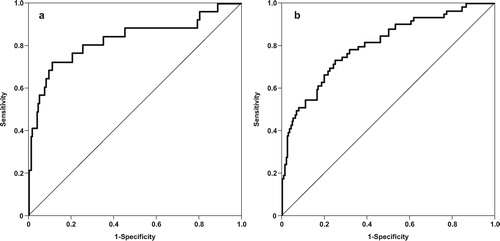
Figure 6. Survival analysis of the amniocentesis-to-delivery interval (days) according to amniotic fluid sTREM-1 concentration cutoff ≥6416 pg/ml in patients with spontaneous preterm labor and intact membranes. Patients with an amniotic fluid sTREM-1 concentration ≥6416 pg/ml (dotted line) had a shorter median amniocentesis-to-delivery interval than those with an amniotic fluid sTREM-1 concentration < 6416 pg/ml (solid line) (2 days (95% CI 0.8–3) vs. 37 days (95% CI 30–44), respectively; p < 0.001).

Table IV. Diagnostic indices and likelihood ratios of amniotic fluid sTREM-1 concentration for the detection of intra-amniotic infection and intra-amniotic inflammation in patients presenting with spontaneous preterm labor with intact membranes.